“An LSA with headroom and plenty of room for two full-sized adults!” That’s how Jan Pjatak, president of Tomark Aero, describes the Viper SD-4.
The brightly painted Viper made its first appearance at the U.S. Sport Aviation Expo in Sebring, Fla., in January. The low-wing metal airplane is manufactured in Slovakia and brought to the United States by Tomark Aero USA based in Frisco, Texas.
But while the LSA is built in Europe, then brought to the United States for reassembly, don’t call it a European design, Pjatak warned.
“The Viper was designed for the American LSA market and to meet the FAA requirements,” he said, noting that many of the LSAs that come over from Europe were designed and built to European standards and then had to be reworked to fit into the American LSA category.
Very often, that means that they do not have the cockpit room Americans are accustomed to.
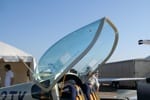 “The Viper has the widest cockpit in its class,” he continued. “I weigh 225 pounds and have big bones and when I am flying with another guy bigger than me we are comfortable. There is no shoulder touching and plenty of headroom because of the bubble canopy.”
“The Viper has the widest cockpit in its class,” he continued. “I weigh 225 pounds and have big bones and when I am flying with another guy bigger than me we are comfortable. There is no shoulder touching and plenty of headroom because of the bubble canopy.”
The latter is important, said Pjatak, who easily notes that in some airplanes, the canopy is so low larger pilots have to hold their heads sideways to avoid hitting the canopy.
“After a couple of hours, you get a stiff neck,” he said. “That isn’t a problem with the Viper.”
Although designed for the light sport category, which is daytime VFR only, the Viper meets FAA requirements to fly at night and even IFR, if the pilot is appropriately rated, according to Pjatak.
The Viper, powered by a 100-hp Rotax, is capable of cruising at 120 knots.
“You can fly up to 400 miles on standard tanks — that’s about four hours,” he said. “There is also an option for bigger tanks that allow you to fly up to six hours.”
While designed for the LSA market, Pjatak noted the Viper is being marketed to pilots all over the world and filling a variety of niches.
“It can be used by a flight school. The landing gear, in particular, is very strong,” he said. “We tested it by dropping the airplane from 15 feet up. The South Korean Air Force is considering using the Viper for its basic training aircraft. It also has a glider hook on it and is certificated to be a tow airplane, so it could be used for that.”
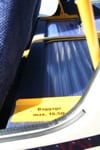 Pjatak notes that the LSA also appeals to pilots who want an airplane they can use for business travel. To that end, the baggage compartment behind the seat has a cover, “so if you are in turbulence the baggage won’t bounce all over,” he explained.
Pjatak notes that the LSA also appeals to pilots who want an airplane they can use for business travel. To that end, the baggage compartment behind the seat has a cover, “so if you are in turbulence the baggage won’t bounce all over,” he explained.
The interior of the Viper is designed to be more comfortable and a little more refined than other LSAs, he added.
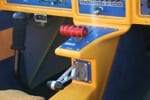 “The throttle is an airline style and right below it is the hand brake, so when you bring the throttle back and reach for the brake you feel like an airline pilot,” he said. “The trim actuator is on the stick.”
“The throttle is an airline style and right below it is the hand brake, so when you bring the throttle back and reach for the brake you feel like an airline pilot,” he said. “The trim actuator is on the stick.”
Panel options include the Dynon Avionics glass panel. “We are working on getting a Garmin package put in, if that is what the customer wants,” he added.
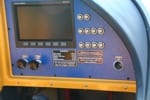 The seat is made from laminate and is screwed into the body of the airplane. There is an option for adjustable rudder pedals and a ballistic parachute.
The seat is made from laminate and is screwed into the body of the airplane. There is an option for adjustable rudder pedals and a ballistic parachute.
The Viper is a ready to fly model. “We won’t be making a kit,” Pjatak said. “We don’t really want to. Everything on this airplane is laser-cut and precision built. We don’t believe that people in a garage can produce the same quality.”
If the Viper does require maintenance, any aviation mechanic who works with sheet metal or specializes in Rotax can do the work, he said.
“In an extreme cause we can ship parts from Europe for repair,” he said, noting, “it takes anywhere from 10 days to two weeks.”
According to Pjatak, the company wants to open a production facility at Winnsboro Municipal Airport (F51) in Texas, but first needs to sell at least 10 airplanes in a single year.
Base price of the Viper is $99, 990; fully loaded, $130,000.
For more information: Tomarkaero.com


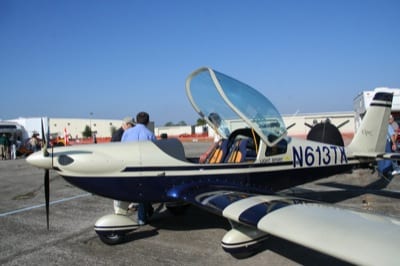
Thank you for your coment RVDriver.
I know,that there is always exeptions to any statement. I was trying to make my comment to many pilots who dont have necesary knowlwdge and resources to even ever finish such a project. This airplane is LSA, not experimental. We want to keep it so.
This is the reason we have only 100HP engine (US regulation).
This year we will be in Oshkosh airshow, please visit our presentation area and we can talk some more about quality of the workmanship on Viper SD-4. Thank You.
Mr. Pjatak, your remark about kitplanes is way off. Ever been to Oshkosh? The showplanes are light years ahead of production aircraft when it comes to detail, fit and finish, etc. It’s glaringly obvious when you look at so many misalinged parts on Cessnas, Beechcraft, Piper and even most of the new glass planes. I am an RV owner and builder of an RV8A. I am not neer as anal as a lot ob builders and was perfectly satisffied with some cosmetic flaws that no one except another builder could detect. Many of the most beautiful and best built airplanes that show up each year in Oshkosh were built in garages. Mine was built in a 60″X70″ hanger and people marvel at how pretty she is. She was much less expensive than your airplane and will eagerly fly circles around it.
However, after making the above comments it does appear that your plane is very nice and desirable when compared to others in the LSA market.l It’s a very cool looking airplane and I wish you a lotta luck with it. By the way, I have flown over 800hrs on the ROTAX 912 and 912S.
Great engines. Just a little overpriced and under marketed.
Thanks